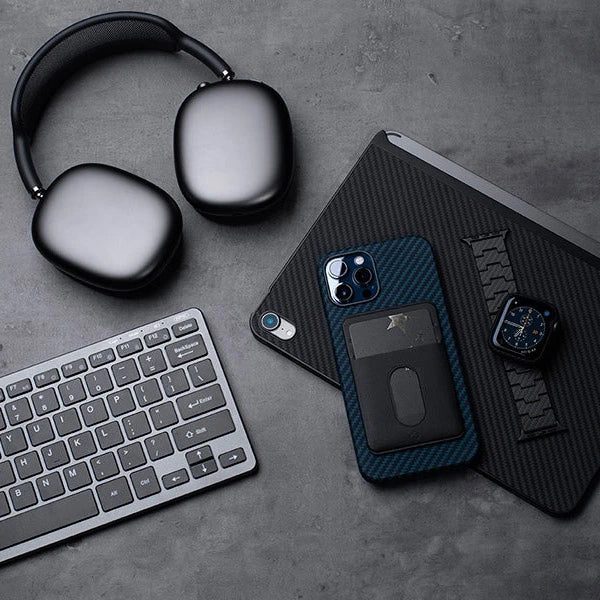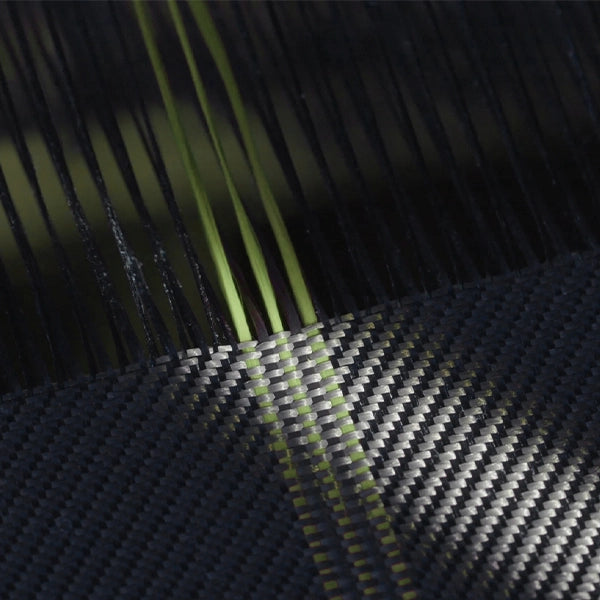
1. The shift from the “Traditional” magnetic stripe to chip
The magnetic stripe on the back of your credit card could become a rare sight in the very near future as the EMV chip card is on a mission to replace them.
For almost forty years since its creation, the magnetically striped credit card has revolutionized the way we make payments and share personal information, yet as I type this, it is slowly being faced with extinction.
Although, this familiar magnetic technology may vanish for good in the near future, IBM (quite rightly), have named it as one its top 100 contributions to society.
So where did it all start?

Forrest Parry, an IBM engineer, succeeded in securing a piece of magnetic tape (the predominant storage medium at that time) to the back of a plastic card as far back as 1969. This was later refined for use with credit cards by a team led by Jerome Svigals, an IBM Project Manager, who is considered to be, the father of the magnetic stripe credit card.
Svigals' team spent seven years exploring ways to record personal and financial information onto the magnetic tape adhered to the back of a card that could be inexpensively and reliably decoded by a machine. The significant change came in 1970 when the magnetic stripe credit card had its first try in a joint pilot project by American Express, American Airlines and IBM at Chicago's O'Hare Airport. This was so successful that in 1973, the magnetic stripe credit card was rolled out as bank cards and employee ID cards.
Unfortunately, at the start, the $2 cost of a magnetic stripe card was considered too high for Visa and Mastercard. It was only when the price came down through improvements in production to a more acceptable 5 cents per card in 1980 did they eventually sign up and start to use it. The rest, as they say, is history.
That is until today, where many now consider that the magnetic credit card’s days are definitely numbered and it won’t be long before it is phased out with the ever-expanding use of the EMV chip card. Even the father of the credit card, Jerome Svigals feels this, “My guess is that the stripe will disappear”.
Ok, so what is EMV?

2. What are these EMV Chip Cards?
EMV chip technology is fastly becoming the global standard for credit card and debit card payments. It is named after the original developers, Europay, Mastercard and Visa and utilizes an embedded microprocessor chip within the card to provide a more secure and authenticated transaction process.
The standard has two more names given to it and may be referred to as ‘chip and pin’ or ‘chip and signature’. The key difference between these is down to the method used to authenticate the transaction by the card issuer.
The EMV model has now grown to include RFID chip-based credit cards and a global consortium comprised of Visa, Mastercard, JCB, American Express, China Union Pay and Discover now manage this.
This migration of payment processing over to chip-based technology has been driven by the increasing demand from the banks to reduce and eradicate payment fraud.
So, how do they reduce the risk?

3. EMV Cards are more secure than traditional cards?
Have you ever been the victim of credit card fraud?
Well, I really hope you haven’t. However, the sad fact is that millions of people each year are affected by this invisible crime.
Shockingly, 46% of Americans have been the victim of credit card fraud in the past 5 years.
A report from Barclays found that 47% of the world’s credit card fraud happened in the U.S alone.
The Nilson Report estimates that in 2016, losses topped $24.71 billion, which is a 12% increase over the previous year.
Individual financial losses vary widely. But in 2014, the median loss (include direct and indirect financial losses) was reported to be $300 for each incidence of fraud. The average reported loss was $1343. Among those victims who reported a direct financial loss, the average was $7761 and the median was $2000 per victim.
Credit card skimming is a very sneaky tactic. Identity thieves are able to steal your personal information and create duplicate cards. Approximately 37% of all credit card fraud in the U.S. is related to counterfeit cards.
Okay, let’s just stop here a moment so that you don’t have an anxiety attack.
Fortunately, card issuers have already realized the problem and that is precisely why they are shifting over to EMV chip cards. Since Oct. 1, 2015, US financial institutions have been implementing the EMV Liability Shift, which transfers the liability of fraudulent transactions over to the merchant unless they replace their aging payment processing systems with chip-enabled card readers. This important move gave a huge boost to the deployment of EMV chip cards.
So, why are EMV credit cards more secure than magnetic stripe cards?
First off, magnetic stripe cards are “old fashioned”. Think about it, they are using technology that was original developed in the 1960s, the same as those old cassette tapes your grandparents used to listen to music on, which incidentally, are now considered antique! But, magnetic striped credit cards are still with us. Strange enough.
The biggest problem is that this ‘ancient’ magnetic stripe technology is used to store unchanging data.
It means that whoever acquires the data containing the card number and the cardholder’s information, can then go on to counterfeit the credit card and subsequently spend lots of your money. This therefore, made the magnetic stripe credit card the prime choices for fraudsters.
However, the EMV chip card uses different technology and different processes. So, what you have now is that, every time an EMV card is used for payment, the onboard microprocessor creates a unique transaction code that cannot be used a second time. Therefore, the EMV chip cards stay safe even if the information was hacked, because the information changes and this makes things not attractive at all to the fraudster when trying to create a counterfeit card.
In all honesty though, the EMV chip won’t prevent persistent thieves from stealing data, but what it does do is make the ability to counterfeit cards much harder and less likely to occur.

It is worth pointing out at this stage that even though EMV cards are being pushed out very quickly, a lot of them still have a magnetic stripe on the back of them. This is because some merchants are still using the old magnetic reader technology and have not yet upgraded to the chip reader terminals.
This has created confusion for some, worried that if the magnetic strip is damaged and becomes unreadable, the chip will also be unreadable. Fear not, as the two are not connected and your card will continue to work with the chip even if the magnetic strip is useless.
By the end of 2015, the adoption rate of EMV chip cards in European Zone One had reached more than 84%. In 2011, the UK Cards Association and Financial Fraud Action UK published a research reported that showed that counterfeit fraud losses dropped 63% between 2004 and 2011 due to the significant implementation of EMV chip cards.
In the same study, it also showed the U.S. was the prime target for those committing to credit card fraud when using counterfeit cards overseas.
4. The market trend of EMV Chip Cards

EMV has been the international standard in most parts of the world.
For example, when you travel to UK, you will see that everyone is using the chip and pin card and every retailer will be able to take a payment using the chip and pin card, rarely will you find a magnetic strip card being used.
Check the below table for Worldwide EMV Chip Card Deployment and Adoption from 2013 to 2015 by EMVco.
| 2013 | 2014 | 2015 | ||||
|---|---|---|---|---|---|---|
| Region | EMV Cards | Adoption Rate | EMV Cards | Adoption Rate | EMV Cards | Adoption Rate |
| Canada, Latin America, and the Carribbean | 471M | 54.2% | 544M | 59.5% | 680M | 71.7% |
| Asia Pacific | 942M | 17.4% | 1676M | 25.4% | 2459M | 32.7% |
| Africa & the Middle East | 77M | 38.9% | 116M | 50.5% | 160M | 61.2% |
| Europe Zone 1 | 794M | 81.6% | 833M | 83.5% | 881M | 84.3% |
| Europe Zone 2 | 84M | 24.4% | 153M | 40.4% | 200M | 52.3% |
| United States | - | - | 101M | 7.3% | 394M | 26.4% |
*Figures reported in Q4 of 2013, 2014, and 2015, respectively and represent the latest statistics from American Express, Discover, JCB, MasterCard, Union Pay, and Visa, as reported by their member institution globally.
MasterCard had half of its plastic credit cards installed with RFID chips. And Catherine Murchie, MasterCard senior vice president, told that nearly 70% of MasterCard credit cards have chips from March 20, 2016 and she predicted its adoption will be nearly 100% by the end of this year.
What if cards from Visa, Discover, and other companies are following the same rollout plan? The U.S. adoption of chip cards is very likely to be comparable to Europe by the end of 2017, even surpassing the adoption rates in Canada and Latin America.
So, the final question is this. Are YOU still using a traditional magnetic stripe credit card just like your grandparents did?
Surveys have showed that older Americans are more likely to be affected by credit card fraud. According to a 2015 report by Federal Trade Commission, 24% credit card fraud victim are adults aged 50 to 59, 21% are seniors aged over 60 and and 20% are adults aged 40-49 years old. The high rate is largely due to the traditional, risky magnetic stripe credit cards.
Seriously though, here’s the important bit.
If your credit cards have not yet been updated, get on to your bank, get on to your credit card company, in fact, anyone who can help and demand that you are given an chip based card.
It’s safer for you and it’s safer for the card provider and you now know it makes a lot of sense.
Oh and tell your grandparents to put their magnetic stripe credit cards into the nearest museum!















